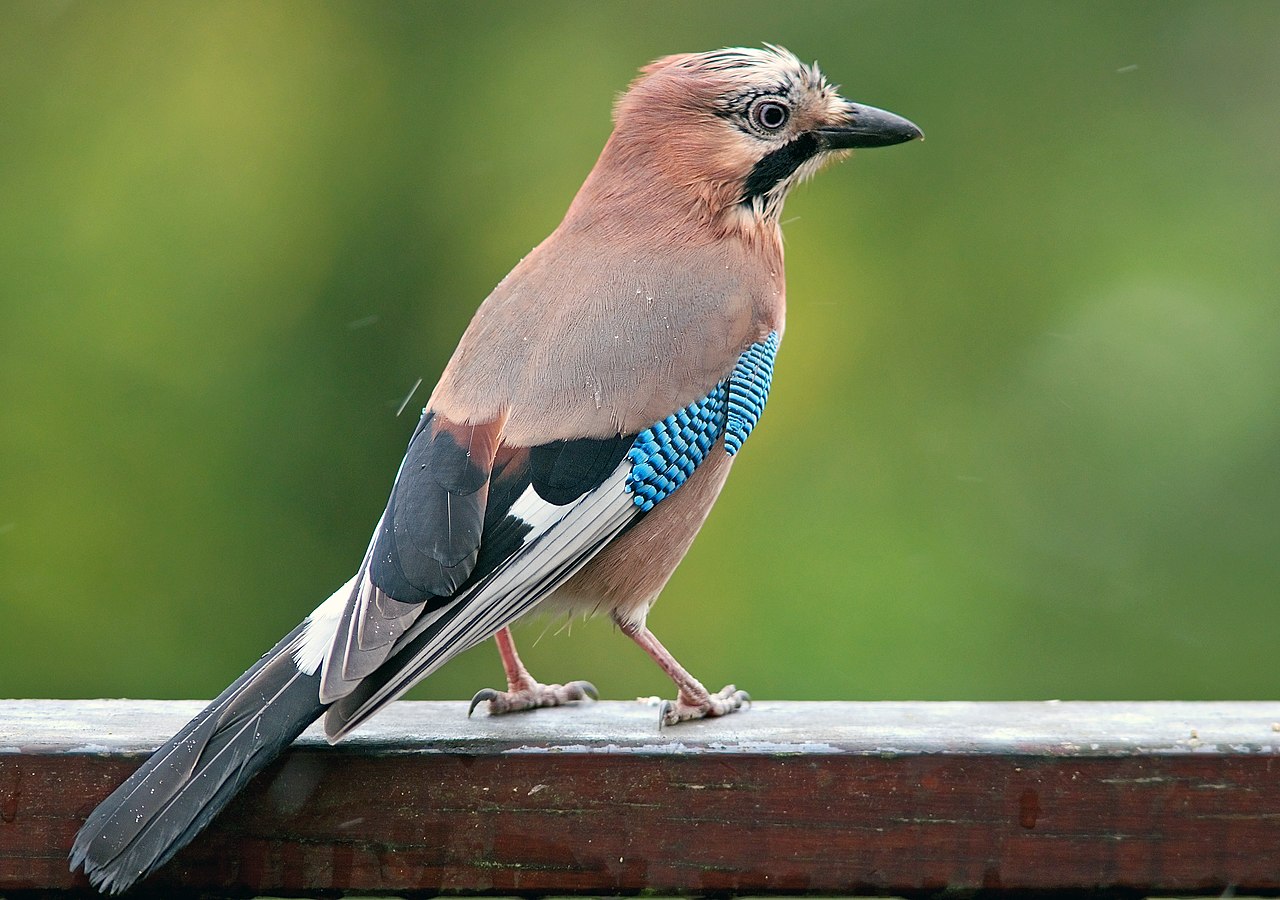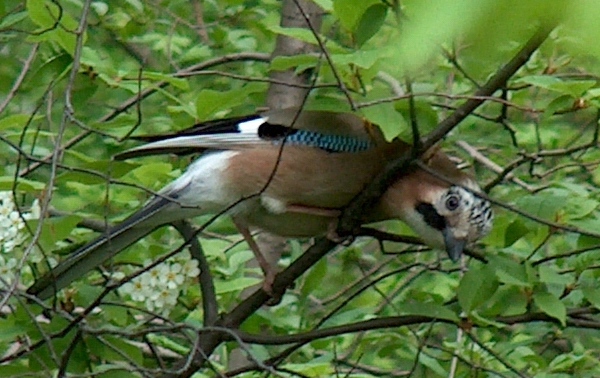Garden Wildlife
Garden Wildlife


Jay Garrulus glandarius
By far the most colourful of the crows, the jay is a woodland species recorded in about 7-8% of gardens, usually the larger and more wooded ones, where they are slightly increasing in occurrence.
What do they look like?
If you are used to crows being black or at least largely so, you would not recognise the jay as being one. Jay's have bright pink bodies, a black moustache over a white throat, grey-black stripes on the head and a big blue flash on the wings. In flight their white rump stands out. Jays are about 34 cm in body length, the same size as a jackdaw and much smaller than a carrion crow or rook. See our crows page for comparisons with their relatives.
What do they sound like?
Their genus name "Garrulus" means "chattering" - and they are very noisy with a harsh squawking call.
Normal squawking Alarm call
What do they eat?
They like beetles and other invertebrates, fruit and large tree seeds like beech mast and especially acorns. They are notorious for caching for eating later, and this is the main way in which young oak trees get established. Jays, like magpies will take songbird eggs and young. In gardens they may take peanuts and mealworms from ground tables.
What do they do?
Jays are more often heard than seen when they are up in the trees, but they do feed on the ground. They mate for life so are often seen in pairs.
How are they doing?
They are doing just fine, with a slow 30% increase in numbers over the last 20 years. There were about 170,000 territories in 2016. They are most abundant in broadleaf woodlands, less so in conifers and scrub, and pretty well represented in villages and towns.
Finding out more:
BTO profile on jay
RSPB profile on jay
Page written and compiled by Steve Head
Olivier SWIFT, XC696799. Accessible at www.xeno-canto.org/696799.
Olivier SWIFT, XC696813. Accessible at www.xeno-canto.org/696813.


Jay Garrulus glandarius
By far the most colourful of the crows, the jay is a woodland species recorded in about 7-8% of gardens, usually the larger and more wooded ones, where they are slightly increasing in occurrence.


What do they look like?
If you are used to crows being black or at least largely so, you would not recognise the jay as being one. Jay's have bright pink bodies, a black moustache over a white throat, grey-black stripes on the head and a big blue flash on the wings. In flight their white rump stands out. Jays are about 34 cm in body length, the same size as a jackdaw and much smaller than a carrion crow or rook.
What do they sound like?
Their genus name "Garrulus" means "chattering" - and they are very noisy with a harsh squawking call.
Normal squawking Alarm call
What do they eat?
They like beetles and other invertebrates, fruit and large tree seeds like beech mast and especially acorns. They are notorious for caching for eating later, and this is the main way in which young oak trees get established. Jays, like magpies will take songbird eggs and young. In gardens they may take peanuts and mealworms from ground tables.
What do they do?
Jays are more often heard than seen when they are up in the trees, but they do feed on the ground. They mate for life so are often seen in pairs.
How are they doing?
They are doing just fine, with a slow 30% increase in numbers over the last 20 years. There were about 170,000 territories in 2016. They are most abundant in broadleaf woodlands, less so in conifers and scrub, and pretty well represented in villages and towns.
Finding out more:
Page written and compiled by Steve Head
What do they look like?
If you are used to crows being black or at least largely so, you would not recognise the jay as being one. Jay's have bright pink bodies, a black moustache over a white throat, grey-black stripes on the head and a big blue flash on the wings. In flight their white rump stands out. Jays are about 34 cm in body length, the same size as a jackdaw and much smaller than a carrion crow or rook. See our crows page for comparisons with their relatives
What do they sound like?
Their genus name "Garrulus" means "chattering" - and they are very noisy with a harsh squawking call.
Normal squawking Alarm call
























